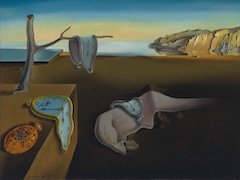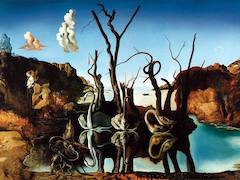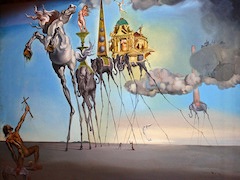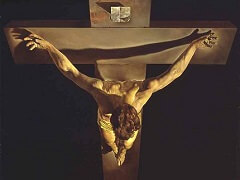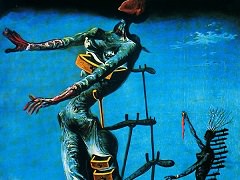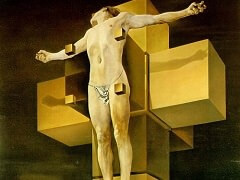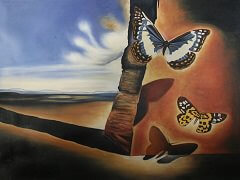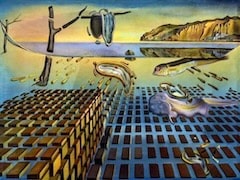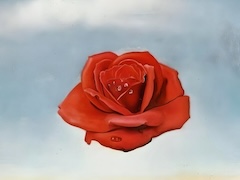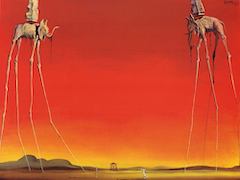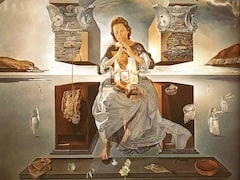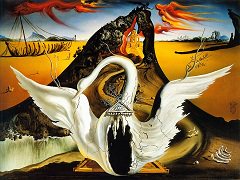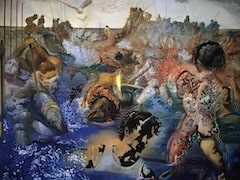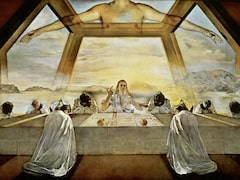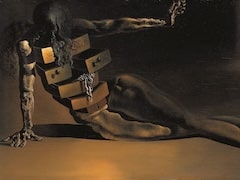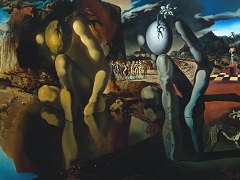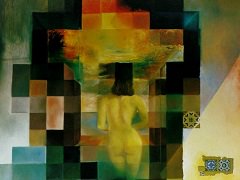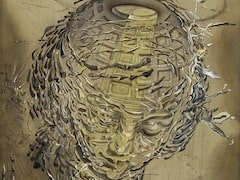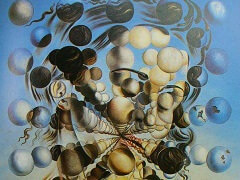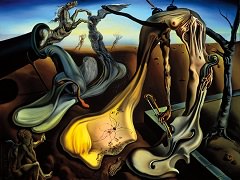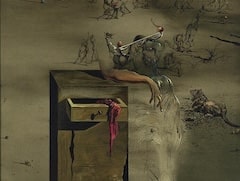The Swallow's Tail - Series on Catastrophes, 1983 by Salvador Dali
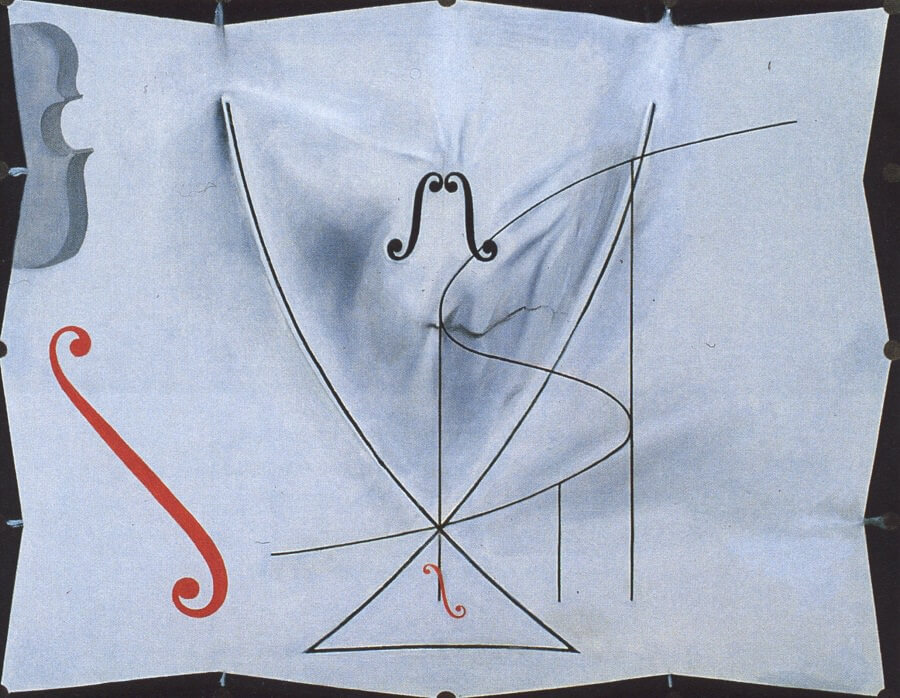
The Swallow's Tail - Series of Catastrophes (French: La queue d'aronde - Serie des catastrophes) was Salvador Dali's last painting. It was completed in May 1983, as the final part of a series based on the mathematical catastrophe theory of Rene Thom.
Thom suggested that in four-dimensional phenomena, there are seven possible equilibrium surfaces, and therefore seven possible discontinuities, or "elementary catastrophes": fold, cusp, swallowtail, butterfly, hyperbolic umbilic, elliptic umbilic, and parabolic umbilic. The shape of Dali's Swallow's Tail is taken directly from Thom's four-dimensional graph of the same title, combined with a second catastrophe graph, the s-curve that Thom dubbed, 'the cusp'. Thom's model is presented alongside the elegant curves of a cello and the instrument's f-holes, which, especially as they lack the small pointed side-cuts of a traditional f-hole, equally connote the mathematical symbol for an integral in calculus.
In his 1979 speech, "Gala, Velazquez and the Golden Fleece", presented upon his 1979 induction into the prestigious Academie des Beaux-Arts of the Institut de France, Dali described Thom's theory of catastrophes as "the most beautiful aesthetic theory in the world". He also recollected his first and only meeting with Rene Thom, at which Thom purportedly told Dali that he was studying tectonic plates; this provoked Dali to question Thom about the railway station at Perpignan, France (near the Spanish border), which the artist had declared in the 1960s to be the center of the universe.

